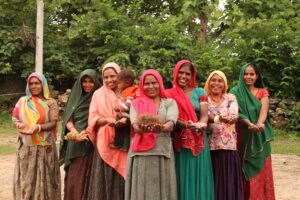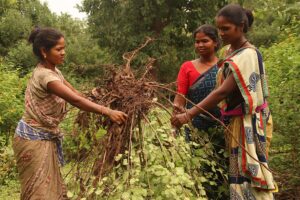How Arunachal’s Women Healers Are Conserving Rare, Endangered Plants
Traditional Adi healing practices are based on the use of medicinal herbs but climate change is driving these plants to extinction. Here is how a few women healers are making a difference
- Aatreyee Dhar

After a light drizzle, Nyamne Tasing is surveying the small kitchen garden fronting her home Sike Tode village in Arunachal Pradesh’s East Siang. The dappled sun washes over the asymmetrical leaves of the banko plant [Solanum spirale Roxb] which she uses to concoct a medicinal mix as taught to her by Yanung Jamoh Lego, a famous folk healer who helped her recover from malaria 25 years ago.
“Yanung asked me to mix the roots of the papaya plant, parts of the Adi Kekir ginger, and banko leaves, make a decoction out of them and drink them,” Nyamne recalls.
Both Nyamne and Yanung belong to the Adi tribe of Arunachal Pradesh. The community uses such herbs as an integral part of its traditional healing system. But climate change, deforestation and overharvesting are causing their slow and steady disappearance from the state’s tropical forests where they grew in abundance. There is also illicit trade in some of these plants that are marked in the IUCN Red List of Threatened Species.
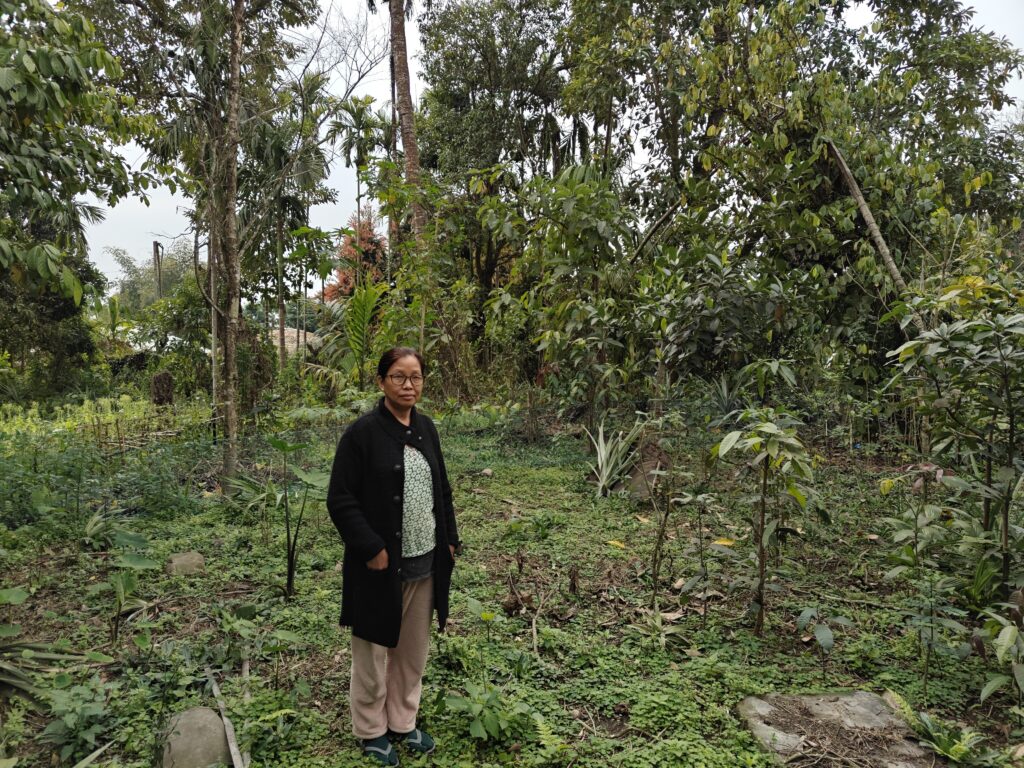
“When I was a child, my village was totally cut off from the rest of the world. There were no hospitals or reliable communication. My community used herbal medicine to treat snake-bites, dog bites and fever. So many of these herbs are difficult to source these days. Climate change is one such big threat to these plants,” Yanung says.
The Botanical Survey of India has documented more than 8000 medicinal plants across the country. Based on species rarity and endemism, India has two botanical hotspots–the Western Ghats and the Eastern Himalayas. Arunachal Pradesh occupies a major chunk of the Eastern Himalayas, housing over 500 types of medicinal plants. These plants are believed to have multiple health properties such as anti-inflammatory, anti-diabetic, and anti-microbial. They are also said to have benefits for the digestion system.
For example, the fruit of the common Indian nightshade [Solanum anguivi Lam.], locally called ‘koyir’, is believed to help control diabetes and lower blood pressure. The raw tuber of the hairless tape vine [Stephania rotunda Lour] is used by naturopaths to deal with cancer and tooth ache.
As per the 2010 Indian Network for Climate Change Assessment, the maximum temperature increased over north-east India by 1 degree Celsius in winter and 1.1 degree Celsius in post-monsoon months. The Arunachal Pradesh State Action Plan on Climate Change predicts a change in forest types in various districts of the state such as the northern region of upper Siang district, the western region of Dibang Valley, the southern region of west Siang and the western region of Kurung Kumey district. This is expected to impact the biodiversity of the state’s forest rich districts by the 2030s.
To deal with such threats to medicinal plants, Yanung pioneered a movement that celebrates the agrarian traditions of foraging, harvesting and eating. She does this by promoting the raising of kitchen gardens in the villages of East Siang district. She has formed around 80 self help groups since 2005, when she was an officer with the Arunachal Pradesh’s agriculture department.
With funding from schemes such as the Rashtriya Krishi Vikas Yojana that incentivise states to design inclusive agricultural plans, Yanung travelled to villages across the district. She taught people how to use herbs for medicinal purposes, grow home gardens and forage wild plants, even offering support in the formation of SHGs.
Nyamne is the leader of one such active SHG, the Herbal Party, that includes 11 women in the 50-60 group. The group went on to win the prize money of Rs 10,000 in an annual competition, beating nine other active SHGS in the village, for raising the highest number of kitchen gardens.. Apart from their medicinal advantage, these gardens make these communities self-reliant. “We are also able to feed ourselves, without depending on the market,” says Nyamne.
Yanung says it is important to conserve this traditional knowledge of botanical medicines. “My father, who was a folk healer, knew better than me about herbal medicine. I don’t know whether my children can live up to the knowledge I have. There is a degradation of our indigenous knowledge. I am preparing these nurseries through the people to preserve whatever remains,” says Yanung.
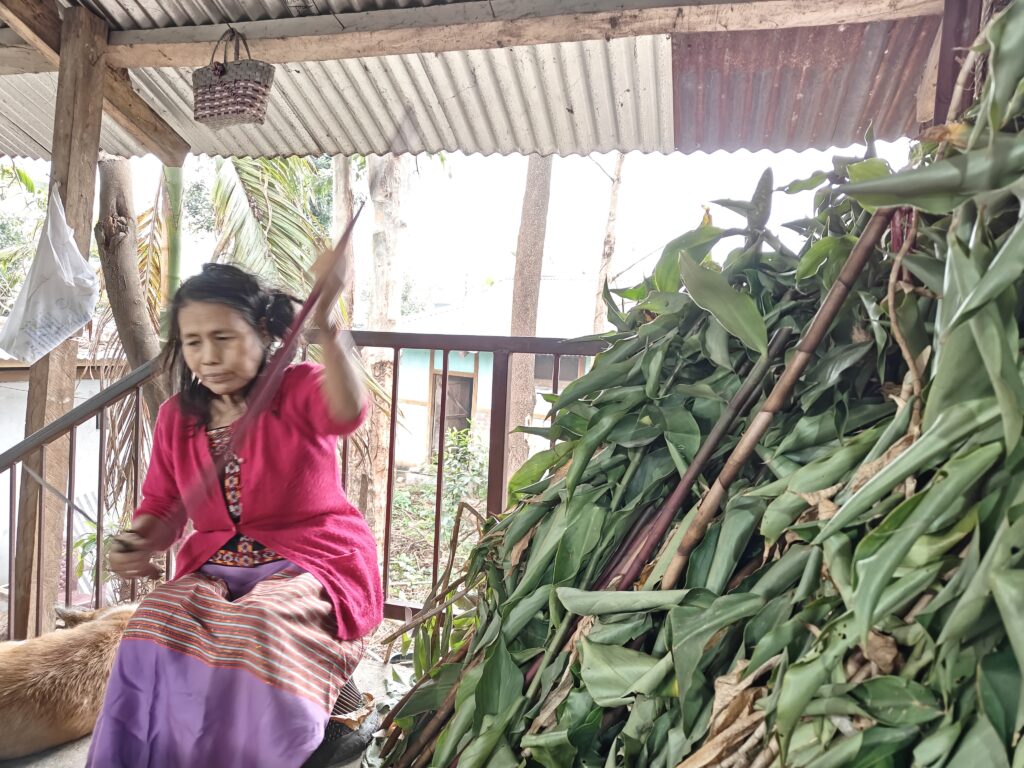
A Complex Therapy
Across the world, more than 80% of the world’s population in over 170 of WHO’s 194 member states use some form of traditional medicine for their primary healthcare. In India, many indigenous communities rely on traditional medicine for their health concerns. In Arunachal Pradesh, the Adi community uses at least 31 endemic plants for traditional healthcare, says a 2013 study.
People in the state tend to turn to herbal remedies not only because of their belief system but also because of the absence of quality healthcare services. The development of health infrastructure in Arunachal Pradesh began relatively late – in the first two decades after independence people mostly depended on the military or civil outpost near their village.
“There is a strong acceptance of herbal medicine in Arunachal Pradesh. When modern medicines fall short of cure, people turn to folk healers to improve the quality of life,” says Amal Bawri, a botanist at the North Eastern Institute of Ayurveda and Folk Medicine [NEIAFMR], Pasighat, an autonomous national institute established under the Ministry of Ayush to strengthen traditional healthcare.
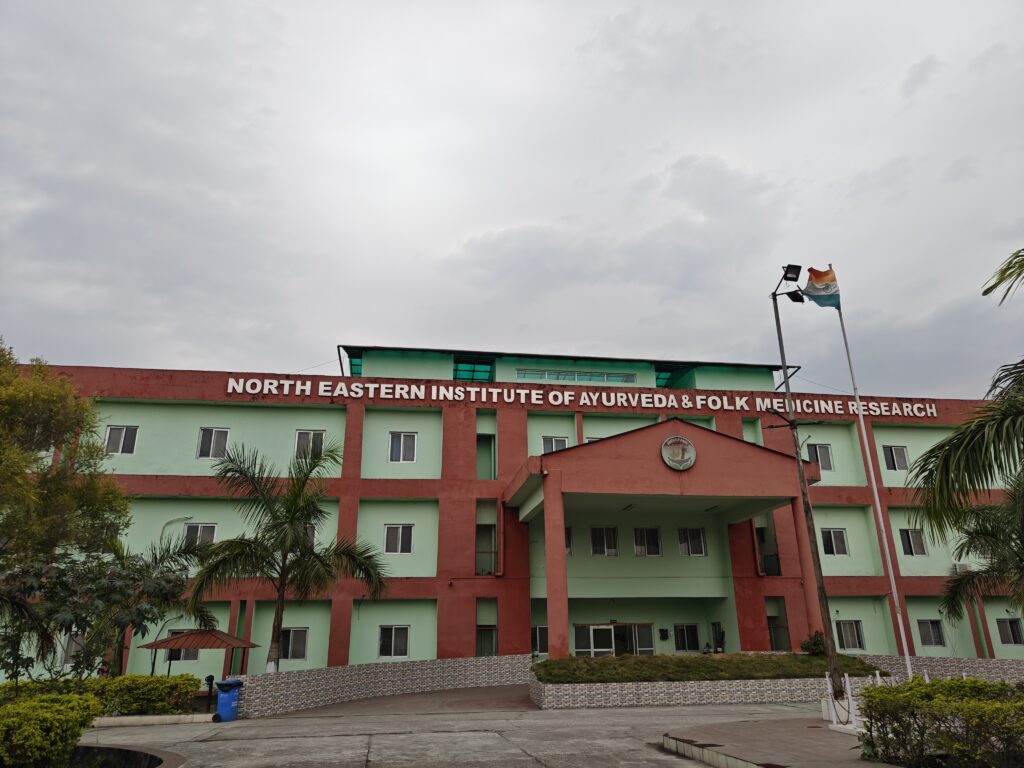
But these herbal medicines are still not backed by scientific evidence. Also, it is time and resource-consuming to isolate the medicinal ingredients from the plants.
“The traditional system of medicine is not formulaic like conventional pharmaceuticals. They are not derived from a single plant compound as they contain a complex mixture of several compounds having either synergistic or additive effects on the ailment rather than a single compound,” says N Senthilkumar, principal scientist at the Indian Council of Forestry Research and Education. “There are around 1,70,000 formulations regarding traditional medicine. We have to try to delineate every formulation but that can be really time-consuming and complex.”
Climate Distress And Healers
Yanung was in class 10 when she started to train as a traditional healer by observing her parents.
“My father would sing hymns as we made offerings to the gods at our annual harvest festival, Solung. These songs also detailed the plant parts that came from the bodies of our animistic gods. That felt like a spiritual connection to plants,” Yanung remembers.
Most plant healers in Arunachal are women. Contrary to popular perception, many of them are educated and have extensive knowledge of the local flora and fauna, especially those that are believed to be therapeutic. But this practice is now threatened by the recent trends in outmigration among the youth to urban areas for jobs and education. This, along with the deforestation and the loss of rare herbs, has hit the traditional healing practice. There are only a handful of elderly practitioners left.
Yanung joined the state agriculture department in 1988 after completing an MSc in agriculture, and went on to become deputy director of the state’s agriculture department. She retired two years ago to become a full-time healer.
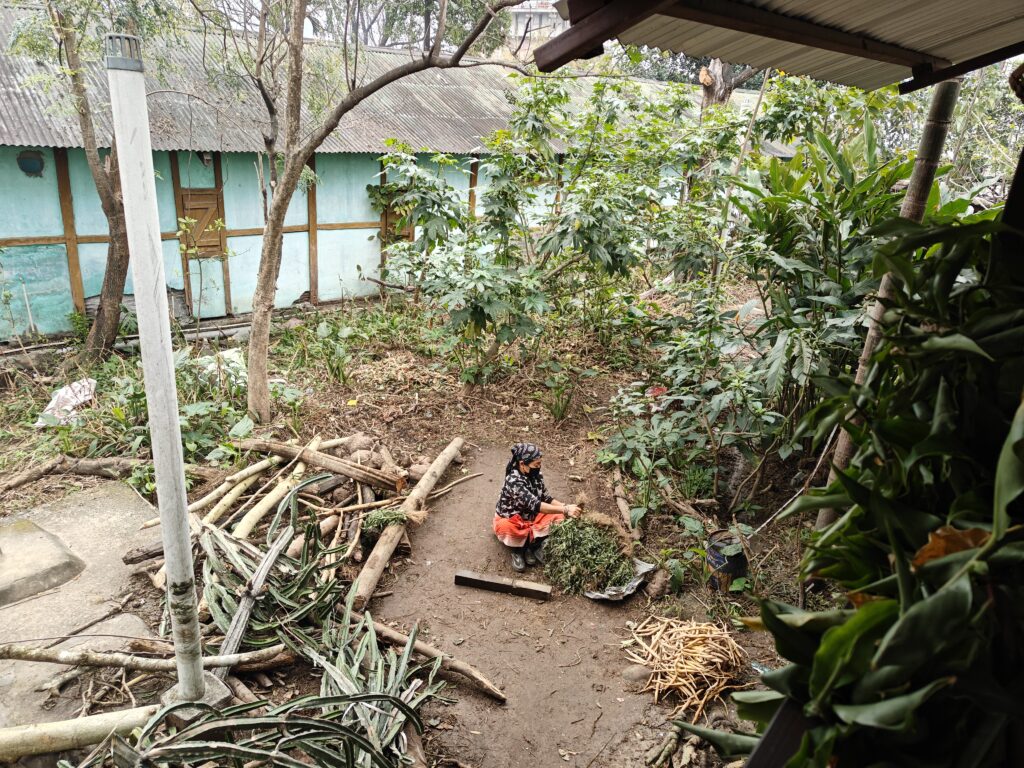
Resilient, Age Old Practices
In Sika Tode, Yanung’s birthplace, less than an acre of land attached to a modest stilt house is covered with herbs. There are separate plant beds for medicinal plants and vegetables. Giant milkweed, hibiscus, marigold, taro, black ginger and figs grow in abundance. Akur deftly plucks the tubers and rhizomes from the last three plants whose anti-cancer properties are being researched. They are however quite rare now. “I foraged them in the wild several years back and planted them in my backyard on Yanung’s advice,” Akur says.
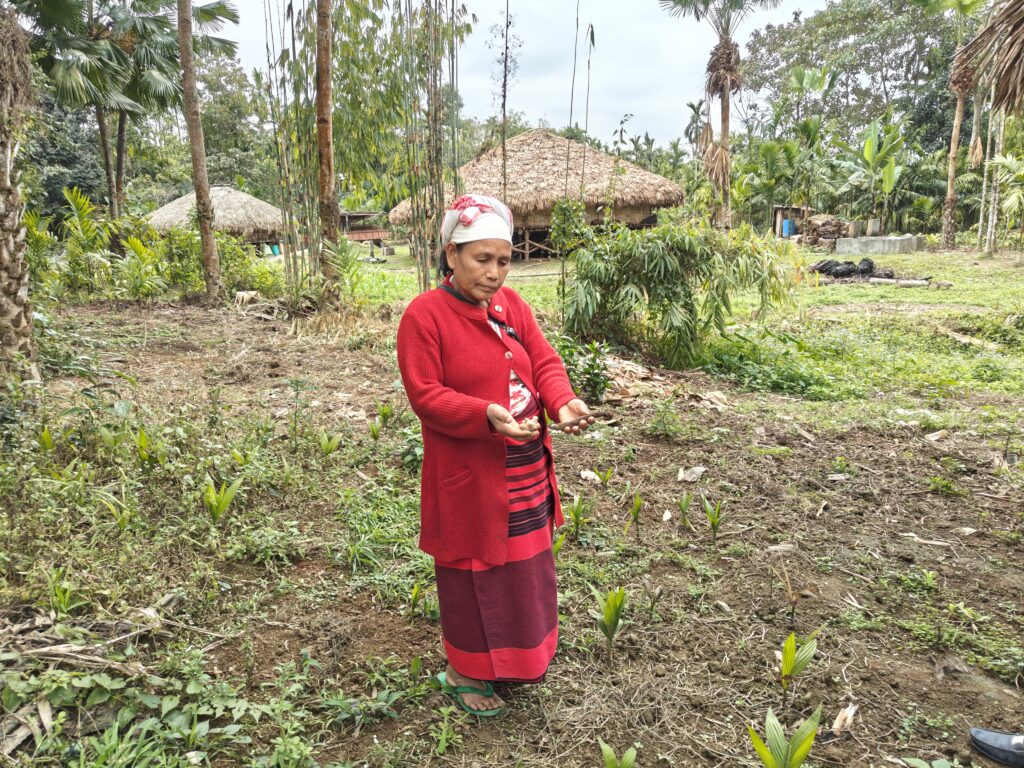
Foraging is not about uprooting or plucking mindlessly, it requires sound knowledge of the area’s biodiversity and respect for the needs of every creature that lives off these plants, including the animals. “I have taught the women to stick to picking from leaves or branches. Uprooting plants could be harmful and may destroy plant populations,” says Yanung.
A report on how the traditional food practices of Adi women improves socio-ecological resilience points out that in subsistence economies women often take the lead in preserving age-old knowledge systems related to harvest, food use and ethnomedicine. But despite that, the roles of women in major conservation programmes in India remain largely unacknowledged.
Next to Akur’s home, Nyamne too has a garden full of plants used for both food and therapy. She points out the plants that she used to supply Yanung with healing herbs: fleshy leaves spiralled around the stem of the Tali [Costus igneus] that healers recommend for diabetes, the Killing Kiro [Centella asiatica] believed to bring relief in jaundice and gastric and gynaecological disorders, and the aromatic Epi sipiaak [Leucas aspera] used to treat sinus inflammation and snake and dog bites.
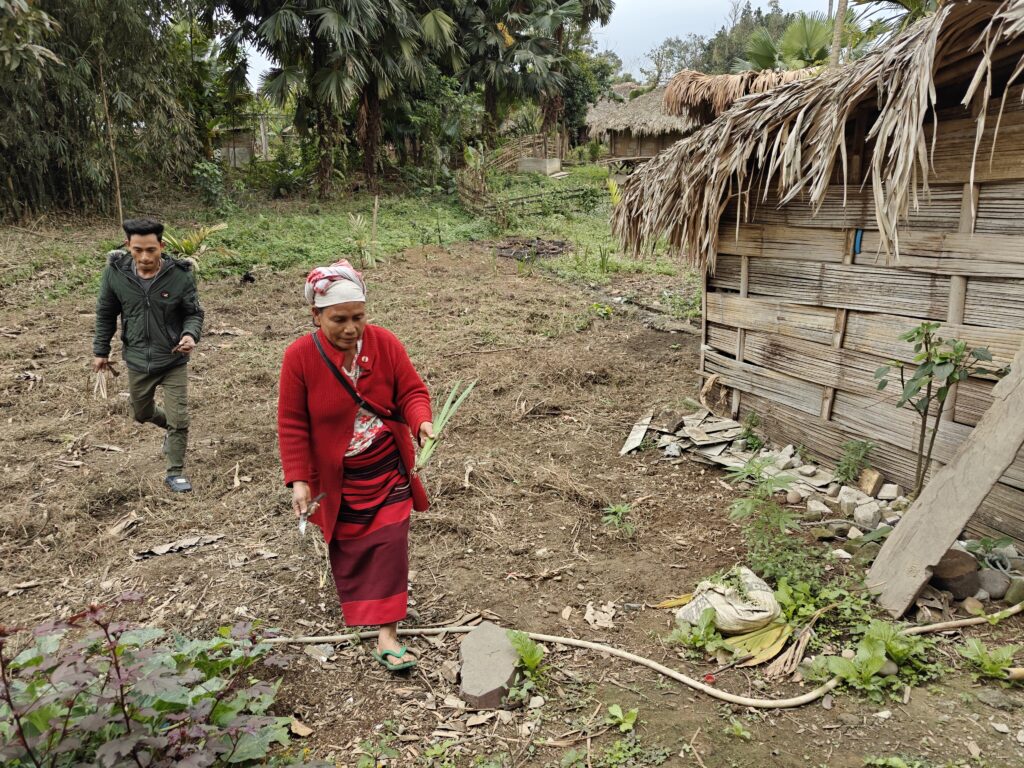
Every woman who is a member of the SHG Herbal Party is paid a daily wage of Rs 400-Rs 500 to venture early morning into the wild to collect the herbs. The habitats of these wild plants are not easy to access, and are often to be found on steep slopes and dense understory layers in forests.
“The backbreaking labour lasts from 8 am to 5 pm,” says Nyanme. The women are also paid for the supply of medicinal plants, which is a little less than the market rate, as Yanung herself sends her staff to collect the supply. In a month, Nyanme manages to sell to Yanung 2-3 quintals of medicinal plants such as ginger at Rs 2000 per quintal and as many times a month as four or five.
Most gardens in the village are under an acre and cost around Rs 5000 to set up, we were told. They are cultivated using practices that help avoid climate risks, such as mixed cropping along with relay cropping to manage soil moisture and fertility.
“These days, it is difficult to get good quality manure. The soil is no longer fertile. We have to hire a tractor to distribute the cow manure across the garden – at around Rs 3000 a trip,” says Yakin Tasing who helps Nyanme maintain her home garden. Most of the produce is first consumed by the family and only the remnants are sold. Food sovereignty has been at the heart of the cultural identity of the tribals.
“We need to be able to feed ourselves healthy, organic food which is not available in the market. Even with meat, we need boiled vegetables almost every day,” explains Yakin.
Foraging And Law
On April 8 this year, indigenous women vendors in the bustling Gandhi market of Itanagar were preparing to sell the vegetables and medicinal herbs they foraged from the jungles, jhum fields or home-gardens. Then forest department officials, along with police personnel, began to seize the produce citing accusing the women of selling products from protected forest areas. The incident went viral on social media with groups such as the Arunachal Pradesh Women’s Welfare Society [APWWS] calling it a violation of the Forest Rights Act, 2006 that allows tribal communities to harvest and sell non-timber forest produce.
“Such enforcement undermines the economic independence of tribal women and contradicts both constitutional values and the state’s commitment to women’s empowerment and indigenous rights,” the APWWS said in a statement. Later, the Principal Chief Conservator of Forests admitted that the seizure of the bioresources had no legal basis.
In an article for Frontline, ‘Criminalising wild food vendors is an attack on our shared memory’, Rajkamal Goswami argues that that legal frameworks such as the Biodiversity Act, the Wildlife Protection Act (WPA), the Forest Conservation Act and the Forest Rights Act allow the sale of uncultivated bioresources–in this case, the food edibles foraged from the wild. The only exception lies in protected areas under the WPA, where extraction of bioresources is permitted if communities have recognised rights under the FRA.
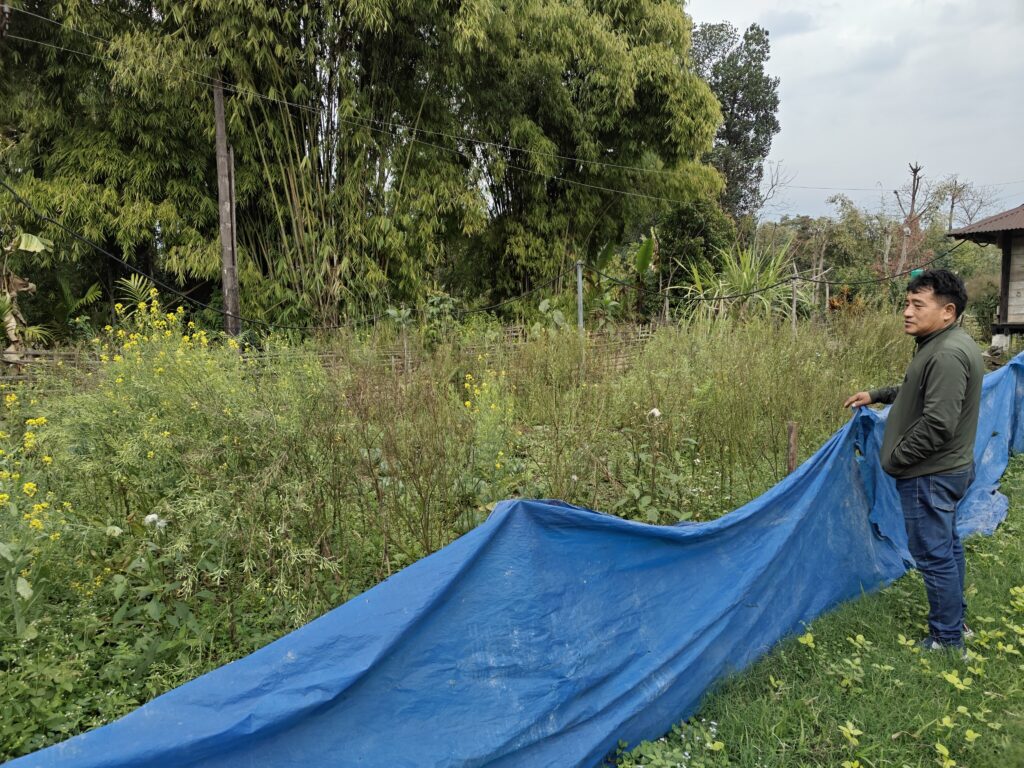
This so-called raid has upset women who have SHG-run vegetable and herb gardens. “Women-led SHGs have cultivated home gardens to reduce dependency on forests while preserving ethnobotanical knowledge. Without nuanced enforcement, even such initiatives runs the risk of being misunderstood as illicit trade, thereby discouraging local stewardship and informal market systems that will negatively impact not just women-led entrepreneurship and rural economies but also bioresource and biodiversity conservation,” says Goswami, a senior researcher with the Ashoka Trust for Research in Ecology and Environment.
There are two government schemes to support herbal gardens: the Ayush ministry’s Conservation, Development and Sustainable Management of Medicinal Plants and the financial assistance for medicinal plant nurseries offered by the National Medicinal Plants Nurseries. These schemes require registration as a society, either by an NGO or an SHG. But there is very little awareness about the schemes among potential beneficiaries such as Yanung. For instance, Bawri points out, SHGs do not need to show land ownership to avail of the scheme while NGOs might.
“Relying on the government means knocking on many doors and dealing with a lot of bureaucratic inertia. That’s why it’s better to do everything on your own,” says a woman working with Yanung who did not wish to be named.
Foraging herbs can also run the practice of overharvesting. A medicinal tree, Taxus wallichiana Zuccarini, once common in Arunachal Pradesh and known to produce the anti-cancerous chemical taxol, is now on the verge of extinction. So foraging has to be learnt and practised with care.
[This story is part of a new series “Climate Leaders: Women in Local Climate Action”, a collaboration between Womanity and Behanbox.]
All the stories in the series can be read here.
We believe everyone deserves equal access to accurate news. Support from our readers enables us to keep our journalism open and free for everyone, all over the world.

